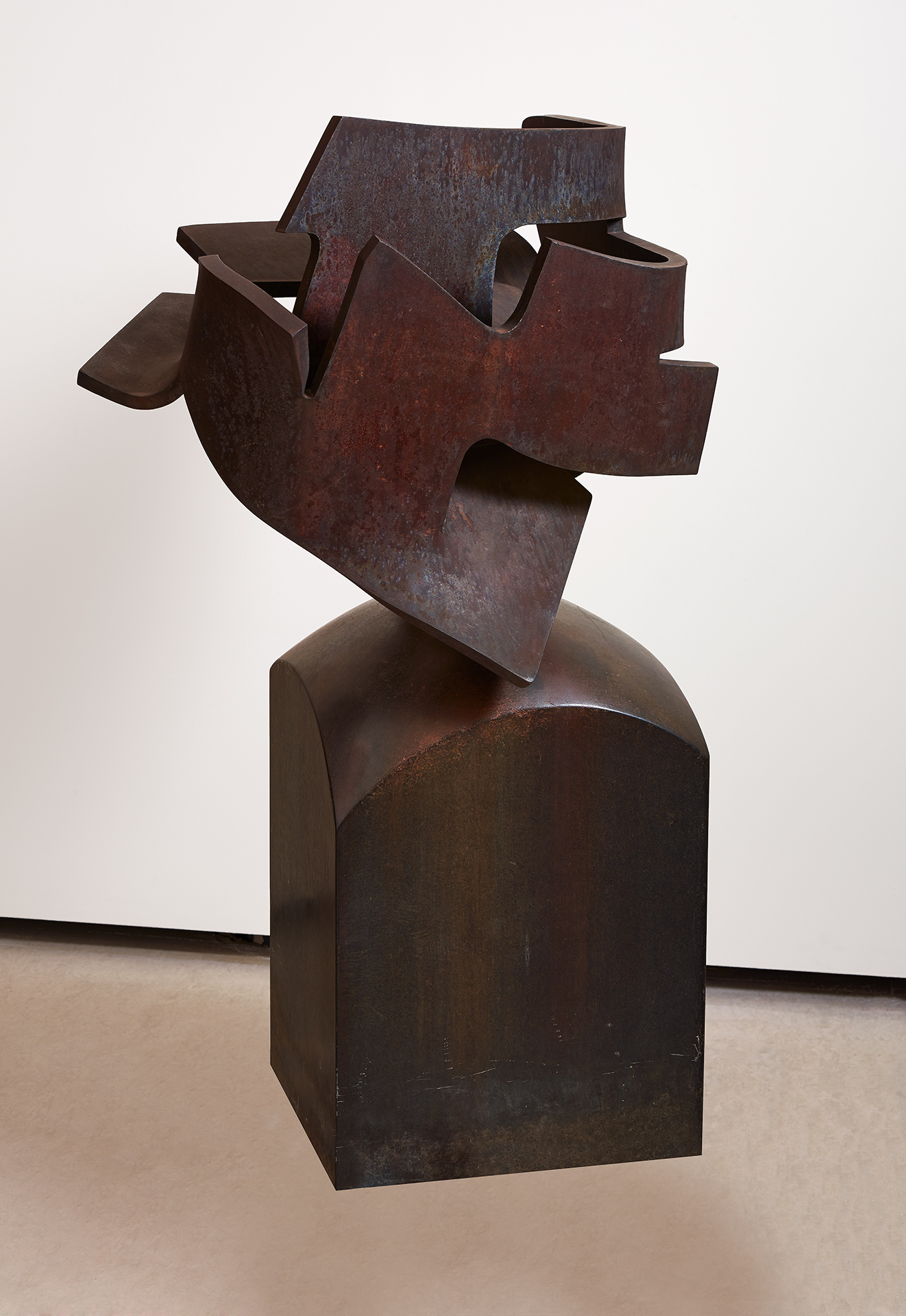
Eduardo Chillida (San Sebastián, 1924-2002)
Rumour of Limits VII
1968
WORK INFORMATION
Iron, 144 × 82 × 80 cm
In 1951, convinced that the "black light" of his homeland would guide his work, Eduardo Chillida settled down in the Basque Country after living in Paris for a time, where he coincided with José Guerrero and Eusebio Sempere and became close friends with Pablo Palazuelo. At his forge in Hernani, the artist rediscovered the artisanal roots of blacksmithing and extolled the beauty of iron, making it the vessel of his dreams and intuitions. Through iron—present in the sculpture tradition of González, Picasso and Brancusi—Chillida found his own voice and consolidated a radical abstract language with a philosophical and spiritual dimension that made his one of the greatest sculptural bodies of work of the latter half of the 20th century.
The works in the Banco Santander Collection illustrate three significant moments in his creative career.
Rumor de límites VII [Rumour of Limits VII] is part of a series of seven iron sculptures begun in 1958. "Rumour is rhythm, limit is measure and the two together are the premonition of a language," Octavio Paz once wrote—a language that aims to explore what Chillida called "inner space", the void. "To harass and hound, to lay traps in that space, to leave it free and flowing, that is the very reason for the work's existence," the artist declared. Rumour of Limits was the prelude to one of Chillida's most iconic public works: El peine del viento [The Wind Comb] (1977, San Sebastián). Working with the architect Luis Peña Ganchegui, Chillida designed an urban space that points to a new idea of monumentality, confronting man with the limits of space and time. The triangulation of the three sculptures—present, future and past—determines the position of the human figure, which appears in the square as an actor on a metaphysical stage: facing the wild waves of the Cantabrian Sea, at the edge of the surf, looking out at the horizon. Limit is the true protagonist of the space.
In the mid-1960s, while continuing to sculpt Chillida embarked on an exhaustive graphic project in black and white, in some cases applied to supports as logos or anagrams. All of them shared the same spatial concept indicated by the word toki, which in Basque can mean space, place or setting, like its synonym leku. The artist invites us to draw closer to the space his own sculpture has created. In 1968, the philosopher Martin Heidegger published his work Art and Space and invited Chillida to illustrate it. In Toki the protagonists are the interplay of twisted and curving planes of steel and the balance between mass and volume. The series Alrededor del vacío [Around the Void] (1964–1969), Leku (1968–1976) and Toki (1969) all refer to essential aspects of the work; they are places for reflecting on space, the void and the limit.
Chillida's experiments with each material posed new questions. He began to work with alabaster in the 1960s and used it to create an extensive group of works entitled Elogio de la luz [In Praise of Light]. This white, fragile, translucent material is the antithesis of solid iron: light emanates from its core, and it requires compact carving from a single block and extremely gentle handling. The ductile nature of alabaster allowed the artist to sculpt a vocabulary of geometric forces that strikes up an intense dialogue with the architecture; the forms flow freely in a game of curves, exedras, juxtaposed planes and surfaces, shifted orthogonal axes... It is "a mental exercise" in imagining and envisioning possible situations, both physical and moral, of human beings in the 20th-century city—also a significant theme in the work of other contemporary artists like Alberto Giacometti and the architect Louis Kahn. [Alicia Chillida]

